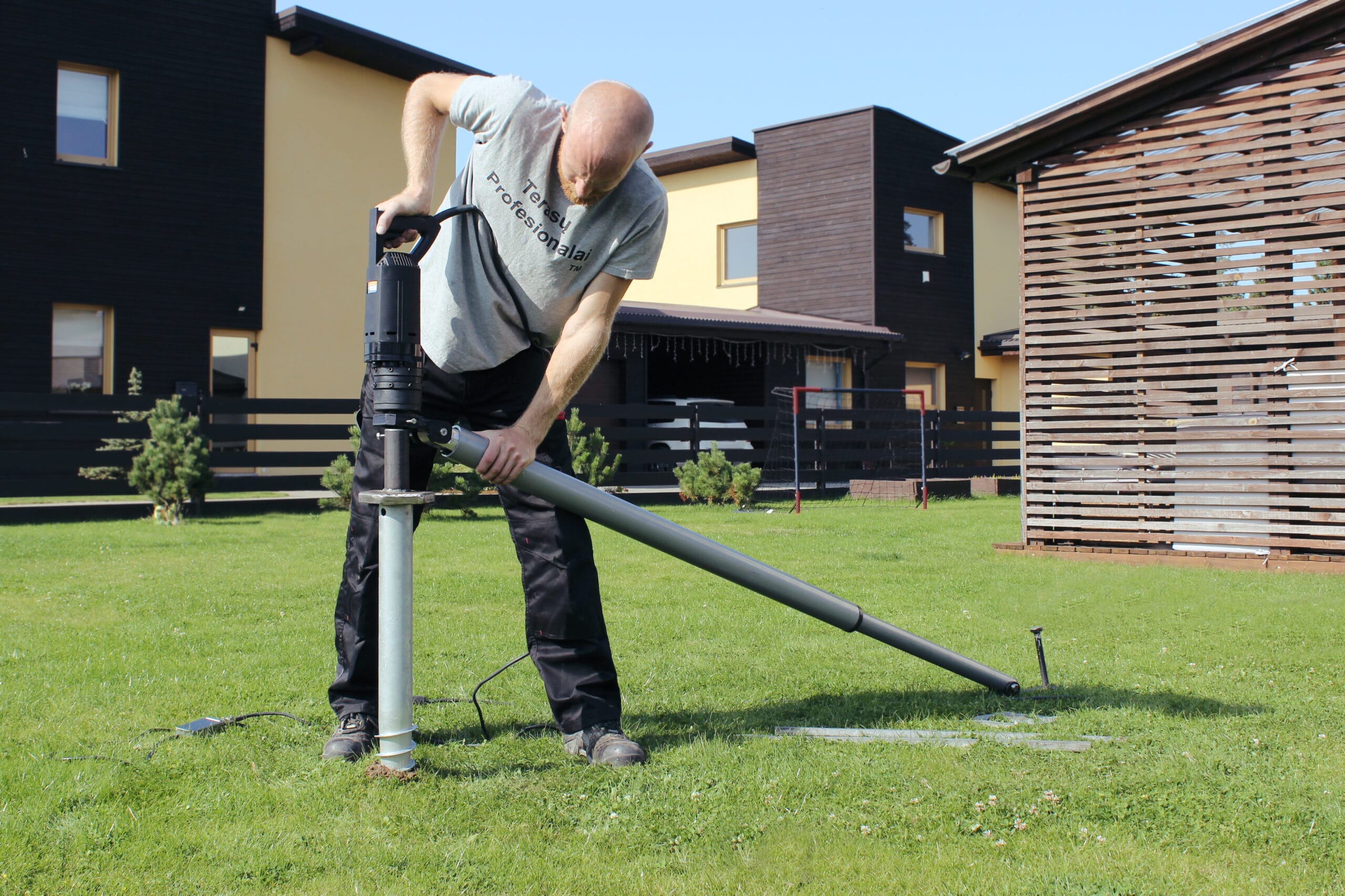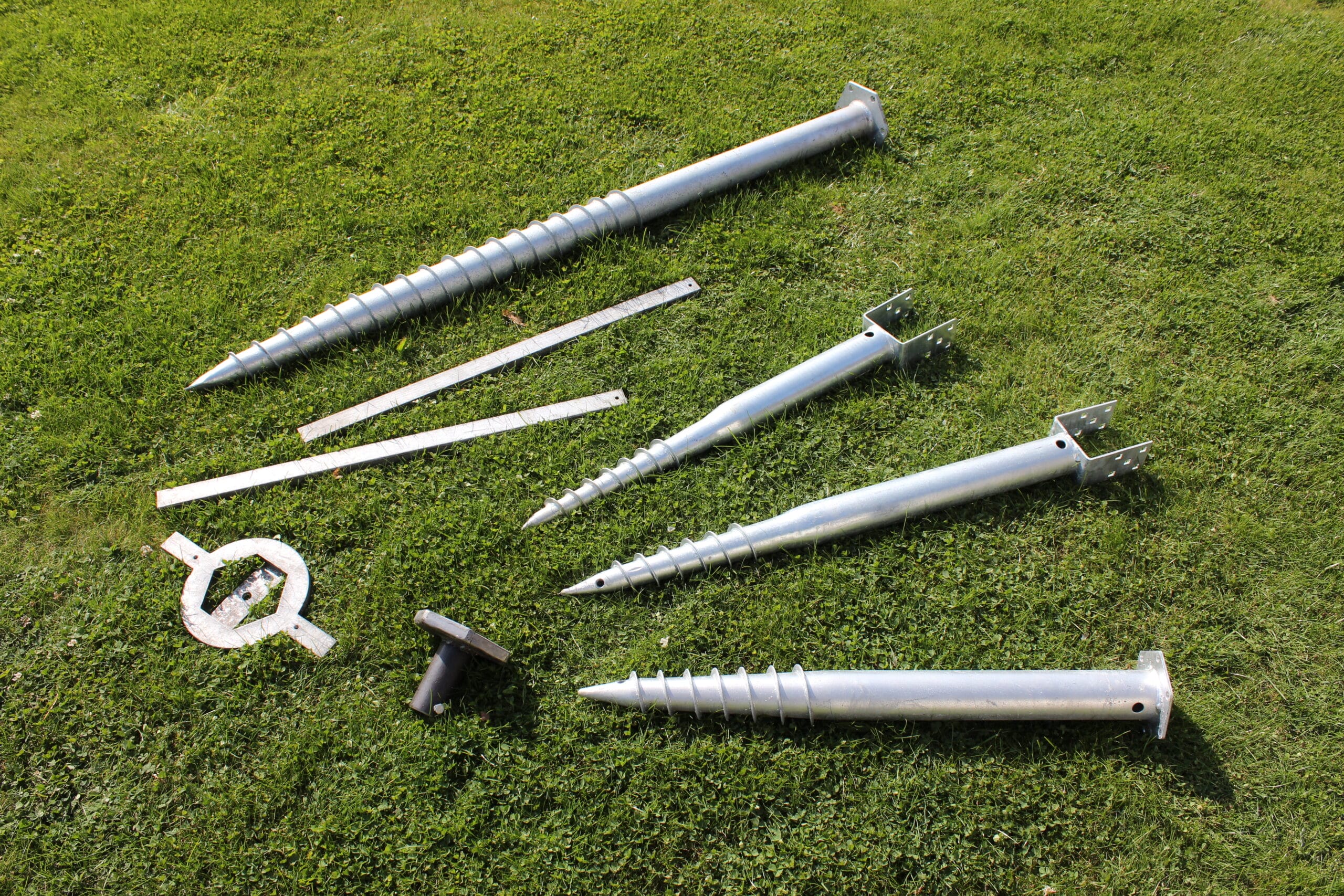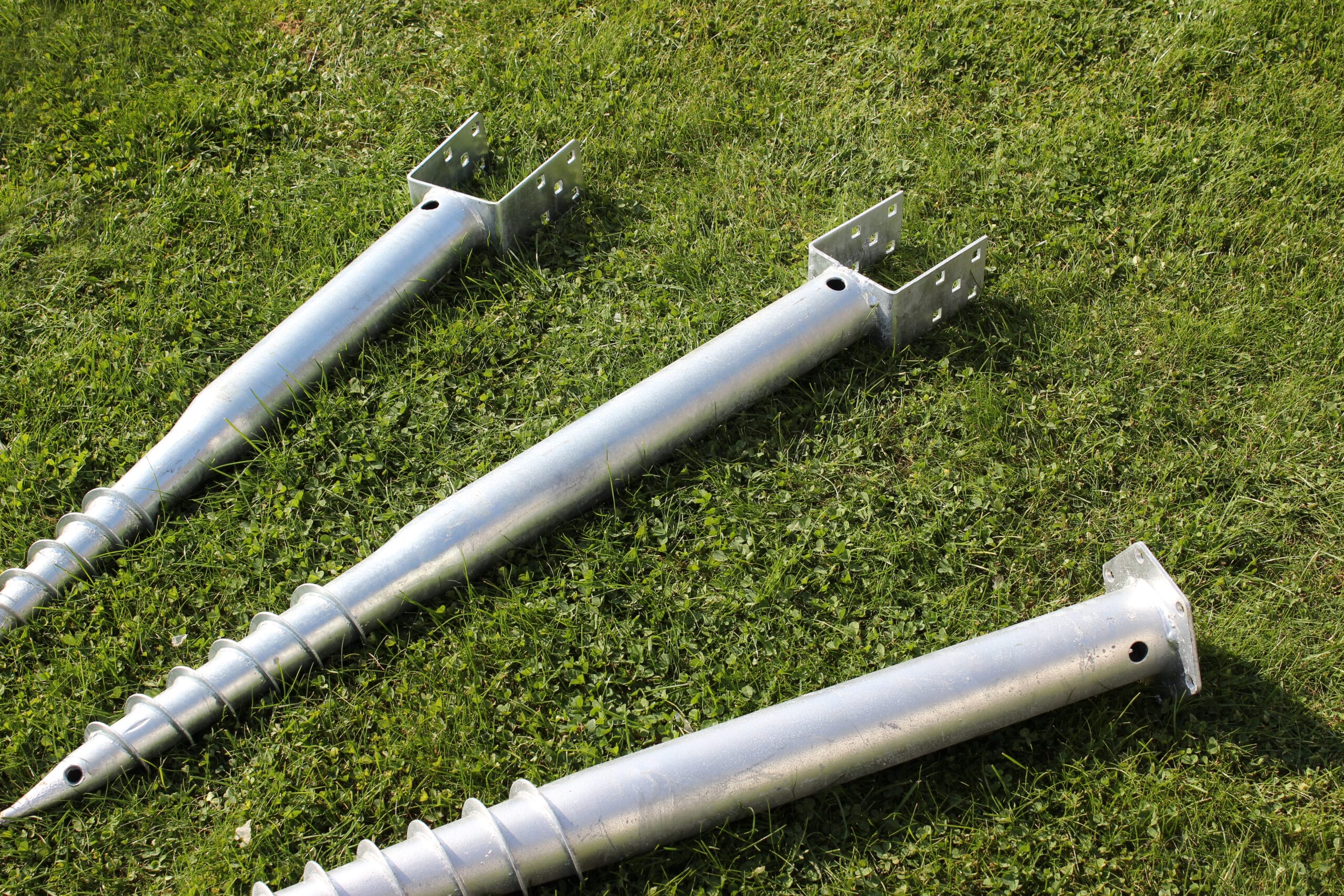Screw foundations – An economical way of installing foundations that is rapidly becoming popular in Lithuania and all over the world. True, surrounded by myths and doubts about their reliability and durability. However, if you look at the technology and objectively evaluate the installation circumstances, it is undoubtedly a modern, efficient and solid solution. Although this foundation installation solution is not suitable for the construction of multi-apartment houses, it is the best for small architectural structures such as terraces, storerooms, sheds, frame or log cabins, fences and the like. Also, screw foundations are the most suitable solution for the installation of foundations for piers, piers and bridges in water.
This method of foundation installation attracts attention for its efficiency - when installing screw piles, there is no need to dig the ground, the work goes much faster. And after installing the foundations, you don't have to worry about environmental management - nothing is left when screwing in the screw piles.
First of all - about the very principle of operation of screw piles - it works in the same way as a wood screw. The selected pile is installed by twisting, that is, it moves deeper by compacting the soil - that is why the screw foundation is firmly embedded in the soil and does not move it. It's true about the ground - if you choose screw piles, you can forget about fixing the ground - you can screw the piles into almost any ground, it won't need to be additionally fixed. The screw piles are prevented from collapsing by their windings, and the vertical load is distributed over the entire area through three layers - the lower and upper frame and the boards mounted on top.
Of course, what the rotating screw piles always have to pay attention to - the weaker the soil, the more likely the foundation is to fall. If the terrace is not elevated - shorter piles will suffice, but if the soil is looser (say poured, sand or gravel) - they should be chosen longer, starting from 1085 mm.
As for the terrace loads, which are usually 15-20 kg/m2 when installing from pine and 20-25 kg/m2 when installing from larch, the piles withstand this weight confidently. Typically, screw foundations can withstand a vertical load of 400 - 800 kg. When the pole is driven into the ground, it is affected by the force of friction and many holding points thanks to the continuous winding. Due to the same winding, a very high force is required to push the screw foundation deep and overcome all the support points. Under pressure, the propeller wants to turn - but when connected to the barrel, it cannot. Therefore, a screw foundation can support large loads without being very massive - unlike a concrete foundation, where as much surface area is exposed to friction, and the bottom must rest on as hard as possible the soil below due to its own weight. Screw piles are made of S235 steel class, their wall thickness is 2-3mm, hot-dip galvanized 60-80µm - according to EU standard EN ISO 1461 and guarantee a service life of 25-30 years.
One of the main advantages of installing screw foundations or installing a base for a terrace on screw foundations is that you can continue construction work on the same day, without waiting for anything, unlike when installing foundations with concrete - in a particularly cold period, when its setting time is particularly long and project planning has to be extended . However, the opinion is often accepted that screw foundations will not withstand the Lithuanian cold weather conditions and the winter frost will lift the piles.
In Lithuania, seasonal frost covers the entire territory, the earliest it forms is in October, and the longest it lasts until the beginning of May. When the temperature drops to minus, the moist ground freezes, the water that becomes ice expands by about 10 percent. and expands the soil. In the winter, the soil seems to try to push the foundation out of the ground and, conversely, it tries to pull it in in the spring when the ice melts.
The soil freezes the deepest in Northern and Eastern Lithuania, as well as in the Sūduva highlands, where the lowest winter air temperature occurs, dry sandy soils prevail, and groundwater sinks deep. On average, the ground freezes to a depth of 30-60 centimeters in winter, but in some years, depending on the heat exchange between the soil and the atmosphere, the depth of frost can be very different from the perennial average. Sand frost can be deeper - up to 1.20 m, and clay or loam - up to 1.50 m. An interesting fact is that the highest depth of soil frost in Lithuania was measured in Dusetes in 1966. and reached as much as 146 cm.
Observing the winter weather trends of recent years, we can clearly see that the duration of cold winters is getting shorter, the ground does not freeze so deeply anymore. And to be more precise - analyzing the data of December - February 2017-2020, the deepest frost occurred in Northern and Southern Lithuania in 2018 and ranged between 20-41 cm. In 2017, the deepest frost was recorded in Varėna district - 6-12 cm, where in other regions of Lithuania it was only 1-4 cm deep. In 2018, 10-17 cm deep frost was recorded in the country, and in 2019 and 2020, the soils in many districts of Lithuania mostly froze up to 8-16 cm.
We are patio professionals and have been involved in many projects. So far, we have not had to deal with heaving foundations, both concrete and screw, due to frost, when they are installed correctly - this takes into account the characteristics of the soil, the height above the ground (up to the structure) and the loads. Therefore, it is best to be guided by practice, based on your own experience and the statistics of forecasters of recent years, as well as LRS STR. says - for light constructions, install the foundation depth at a depth of 800-1200mm.




